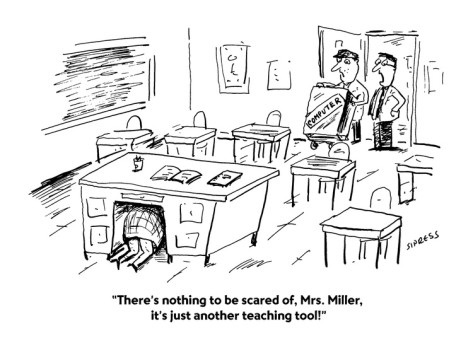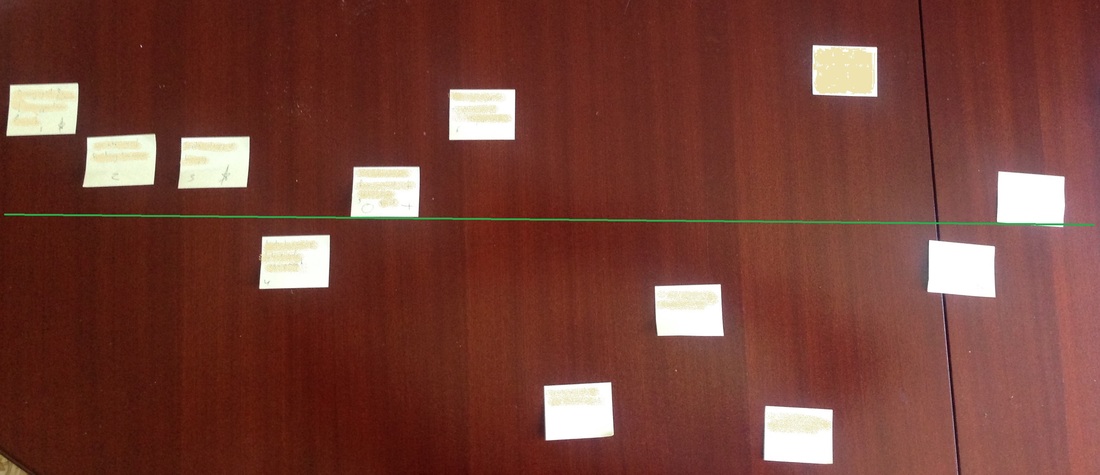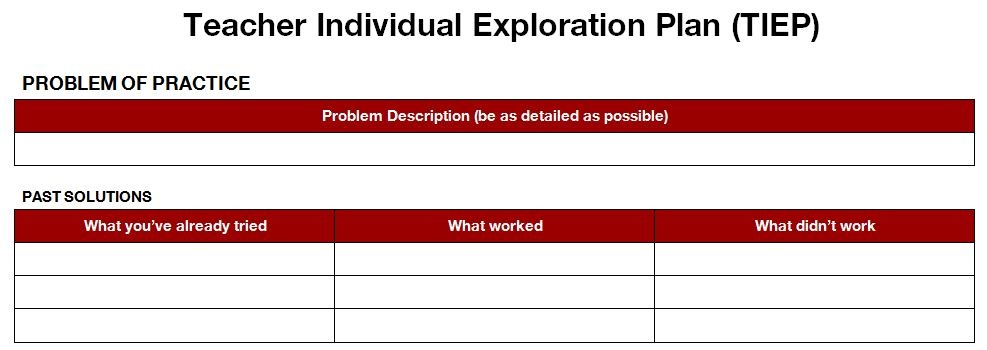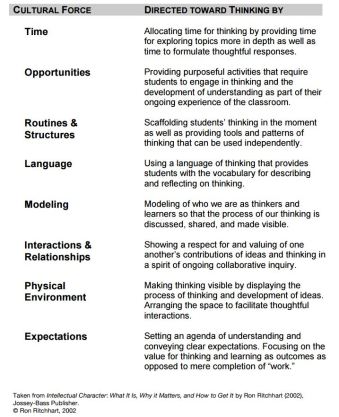|
"The good thing about science is that it's true whether or not you believe in it." - Neil deGrasse Tyson As a teacher, how do you deal with Easter, Christmas, and Halloween in the classroom? What are your thoughts and ideals about those events? I have seen Neil deGrasse Tyson described as a national treasure and he is someone for whom I have a great deal of respect. He is not highly intelligent, but he has the ability to explain often complex concepts in a way that makes them accessible without talking down to people. He has always come across in interviews that I have seen, as being an incredibly down to Earth and ordinary man. As some of us do, I have some quite strong beliefs about a number of things as an individual that influence how I would like to raise my daughter, but which I am struggling to reconcile as a professional in my teaching practice. I would like you to think about some of the sensible beliefs and practices we, as teachers and parents both, work to instill in our children.
If you have not already done so, I would encourage you to go back and watch the above interview with Tyson. "That's what it's all about right? That's what it's always been about! Gifts, gifts, gifts, gifts, gifts, gifts! Do you know what happens to your gifts? They all come to me...in your garbage. Do you see what I'm saying here? IN YOUR GARBAGE! I could hang myself with all the bad Christmas neckties I found at the dump! And the avarice! The avarice never ends! "I want golf clubs!" "I want diamonds!" "I want a pony so I can ride it twice, get bored, and send it away to make glue!" Look, I don't wanna make waves here, but this WHOLE Christmas season is STUPID! STUPID! STUPID!" - The Grinch (from the 2000 movie) I do not like Christmas. The idea that we have to spend so much money people whom we often do not like to show them that we like them and that we can afford to spend money is just ridiculous and the wastefulness during Christmas both materially with packaging and wrapping paper, and with Christmas Cards that go in the bin only a few days later is phenomenal. As parents, we get cranky with our children they demand particular toys, or if they sulk when they get what they want. We do not let them go up to strangers and ask for things. We get cranky when our children lie.
But at Christmas time, we encourage our students to demand things from a fictitious man who we have lied to our children about the existence of by having them write Dear Santa, this year for Christmas I want.... We then take our students for a photo with a complete stranger we know nothing about, often forcing them to be in the photo, often forcing them if the number of photos I have seen with screaming children are anything to go buy. If they get sulky because they did not get what they want at Christmas, it is often called cute. Societally, we then tell people that what they gave us was not good enough by spending, in 2017, $2.4 billion dollars on stuff at the Boxing Day Sales (source). That said, I love Christmas because it is a guarantee chance to spend a few hours with family. This past Christmas was amusing as we spent Christmas day with my wife's family and both of my brothers-in-law have daughters who were born six and eight weeks respectively after my daughter. Three little girls who are all cheeky in different ways and were all toddling around the house was incredibly cute and you could see the joy on the the faces of the family. As you may have guessed, I do not plan on doing Santa with my daughter and it is something my wife and have been debating the handling of for a long time. But where I am finding a professional dilemma is in the classroom when it comes to the lead up of Easter, Halloween, and Christmas. As teachers we should not be imposing our beliefs on students. And so I have struggled with those events. It has been made easier the last few years as I have been either job-sharing or team-teaching and simply allowed my partner to do any activities relating to those events. It is becoming something that I am feeling increasingly uncomfortable with; due, I think, to becoming a parent and feeling the way I do. The way that Neil deGrasse Tyson addresses it seems like a reasonable compromise, challenging the students to think critically for themselves. Is that an approach that could be taken in the classroom without causing too much uproar, do you think? I would love to hear your thoughts on this, and whether you agree or disagree about the inculcation into the capitalist-fantasy world of the Easter bunny, Santa, and Hallowe'en. Thank you for reading.
0 Comments
Welcome back for my review of session three of Jennie Magiera’s master class at FutureSchools 2016. If you have missed the previous two articles, you can read about session one here and session two here. The day to this point had been full of energy and excitement, had been engaging and for me, personally, very much worthwhile attending. I feel that the badging concept discussed in session two was something that I could potentially implement in my classroom whereas when I have heard about badging in the past, such as here, I have been left feeling that it falls into the too hard basket. This session, however, was full of activities that I feel confident that I could take back to my school and implement in either the staffroom or the classroom, within the appropriate context. Jennie spoke about IEP’s, or Individual Education Plans, a document utilised to help with planning for and making adjustments for students with additional needs (whether that be below or above the grade standard) and how they are a document often perceived negatively and that we need to change that perception by using them positively, for ourselves as teachers, as a method of focusing on a single problem, what Jennie termed a problem of practice. When Jennie first entered the role of Chief Technology Officer (CTO) within her school district in the United States, she said that she found she would enter a school and that teachers there would literally turn and run in the opposite direction; “she’s the tech lady who’s here to make us use tech!” Jennie wanted, and needed, a way of changing the perception of technology in education, this ethereal and magical thing that Jennie heard teachers downplay their self-efficacy with “I’m no good at technology.” It is a refrain that I have heard far too often. The Teacher Individual Exploration Plan (TIEP) that Jennie formulates is a different approach to thinking about technology in the hands of teachers. The object is to shift the focus from getting better with technology to getting better as educators. The second goal is one that we should all be striving for, one which teachers the world over invest time and money out of their own account, investing in their ability to be a better teacher. Jennie came up with what she called gripe jam. Gripe jam is a process which consists of every teacher in the room having a stack of post-it notes (side-story: Jennie found that having too many post-it notes in your luggage registers as bomb-components with customs! Apparently it has something to do with the adhesive used on them), and when presented with various daily scenarios, the teachers write down all the problems they encounter in that scenario with one problem per post-it note, and generally only one to two minutes per scenario. We all complain about something in our lives, but when was the last time you were not only given permission, but encouraged to do so? The scenarios were daily situations that she refers to as problem catalysts, linking this process to the wonder catalyst from session one, and were typical situations that any teacher would be able to relate to; arriving first ting in the morning, the middle of the first teaching block, planning / marking time, professional development sessions run by the school, preparing for the start of a new school year etc. The key here, as with the wonder catalyst process, is not to audit the problems. It does not matter what anyone else at your table, in your school or in your district office thinks of that issue, if you perceive it as a problem, than for the purposes of this exercise, it is a problem. Step two involves arranging all of your problems into a continuum from most frustrating to least frustration, in a single line. For this, participants need to spread out so they have approximately an arm-span worth of free space to allow them to order their post-it notes into one continuous line. Jennie indicated that there can be no ties, that you must have a single line of problems, ranking every problem as more or less frustrating as the others. It is also critical here that you rank them based on how frustrating you find the problem. Not your colleagues / students/parents / administrators etc., just your frustration level. The next step turns this ranked list into a scatter plot and is aimed at reflecting on how many people are frustrated by the same thing. If you are the only person who finds something frustrating, then you would move it down the y-axis, if everyone is frustrated by it, then you would move it up the y-axis. This process allows you to reflect on then audit for the purposes of creating the scatter plot, how widespread the impact of this problem is felt within your context, and can end up looking something like this: At this point I was wondering what the point of the exercise was. Despite being intrigued and finding it personally useful to categorise the problems and their relative levels of importance to each other, I could not yet see the overall purpose. The next step was brief; leaving your scatter plot in place, draw a star on those problems that you think you may be able to address or fix with the right resources. This was about looking at a problem and thinking “if I had x then I could probably do y about it, which might resolve part of the issue.”Additionally, we were to place a circle on those problems that we were passionate about, that thing in your school that you see as catastrophic and that you want to engage with and solve where no-one else is interested or sees a problem. This was something that I could understand in terms of its purpose relative to the task and my career as a teacher, and there were a few problems or issues in my scatter plot that, with the right resources and support, I believe I could potentially influence and accordingly added a star to those issues. It was the subsequent step, however, that I found to be the most powerful and useful. With scatter plots in place, indicating how frustrating the issue was to you personally as well as how many people also felt the frustration, with some indication on the post-it notes of your passion or belief about your ability to influence the problem positively, Jennie instructed us to go on a gallery walk. This involved us leaving our scatter plot in place and moving about the room, looking at other people’s scatter plots, looking for two things and leaving a mark on their post-it note, or a post-it note of our own per the image below. Looking at other teachers’ scatter plots and seeing problems that I was facing as well was reassuring; as it meant that I was not alone in facing x, that it was encountered by others, and from conversations with others in the room, I was not the only person who felt relieved in making those observations. The second aspect of the gallery walk was to leave either an idea or our contact details whenever we came across a problem that we felt we could positively contribute to. Personally, I returned to some advice on one of my post-it notes, which I will be able to follow-up on later, and I noticed a number of other scatter plots also had ideas and contact details, hopefully which the owner of the scatter plot found useful. At this point, we returned to the TIEP form, which Jennie has kindly given permission for me to share via the blog, asking that I note that it will be included in her upcoming book, Corageous Edventures. So I include a blank template of the TIEP here for you to access, in Google Doc format. After selecting one problem to focus on, and ignoring the rest for the moment, you need to get to know the problem, detailing as much as you can about what the problem is, factors impacting on the cause or the lack of a solution, what has been tried in the past as a solution to the problem, and what parts of that solution did and did not work as well as why, which looks like this on the TIEP form: Jennie related problems to the radio waves by reminding us that at any given moment there are dozens of radio station signals in the air in a big city, but that it is only by focusing your tuner on one radio band that you can listen to a station clearly. We need to select one problem of practice to focus on, otherwise our attention and effort is diluted across many issues, and each will suffer because of that. Jennie indicated that it is the same with attending conferences, that we should go with one problem of practice to which we want to obtain some ideas, help, tips or solutions for in order to focus our attention, our note-taking, and before all of that, our choice of conference stream and workshop enrolment, a tip that I have heard previously from Kirsty Nash (@NasherK), via Dr Inger Mewburn’s blog The Thesis Whisperer (@thesiswhisperer). This led to a discussion about teacher-led models of professional development. EdCamps are a crowd-sourced model with no presenters’ per-se , which does not need to be done face-to-face as they are now often offered via Google Hangouts. EdCampHome (@edcamphome) offers kits that lay out how to organise and run an EdCamp if that is a route you wish to go down. Further to that, Google Hangouts on the air (GHOTAs) allows you to have up to fifteen actively engaged participants who all have @education.gov accounts. This of course does not take into account the ability for an unlimited number of others to participate via simply watching the GHO and participating via a back-channel such as Twitter (GHOTA FAQ page) A virtual Professional Learning Network (VPLN) is also an important tool to continuously access professional learning on a topic or area that is of interest to you, outside of the professional development that is being offered in your school community. The added bonus here is that you can access a VPLN anywhere and anytime you are connected, which, with the ubiquitous nature of smart phones in society, is essentially anywhere, bring us around to a current buzzphrase: There is one more activity which Jennie took us through, another hands-on process which can be implemented easily in the school, which I will leave for the next article. For now, thank you for reading this, another lengthy article, and as always, I would appreciate any feedback whether here or via Twitter.
View the other articles in this series here. “The world as we have created it is a process of our thinking. It cannot be changed without changing our thinking.” – Attributed to Albert Einstein I like to open each of my blog posts, where appropriate, when I type it at the desktop computer (as opposed to the iPad) with a quote that is somehow relevant to the topic of that particular article. Today’s quote is, I believe, particularly fitting as the topic of this article is the presentation titled Why and How might schools build cultures of thinking? by Simon Brooks from Masada College as delivered at Thursday’s Teaching for Thinking Forum (#T4TConf) hosted by St. Leo’s Catholic College. If you have not read the introductory review article from that conference, I would recommend you do so by clicking here. Simon opened his presentation with the statement, and I am paraphrasing here; “…learning is the product of thinking, and that for those teachers who hold that they are unable to take on new educational fads, such as allowing their students time to genuinely think and reflect about their learning because “…we have to get through all the content…” then it has to be asked, what does getting through the content look like? This was a very interesting statement, as it is one that I have heard numerous times throughout my undergraduate degree from lecturers and tutors at university and from many teachers with whom I interacted whilst on various professional placements. I have found that this statement is elicited by teachers being advised that they need to undertake a particular professional development activity, or in relation to the use of technology in the classroom . Simon then led us into the first of his four focuses, a poem. Specifically, The Schoolboy, by the poet William Blake. I love to rise in a summer morn, ,Simon prefaced his reading of this poem by very briefly introducing us to the thinking routine known as the four C’s with the side-note that we would be returning to it reading through Blake’s words. The four C’s is a thinking routine that can be deployed in any context and which encourages the user to think critically. Specifically, the four C’s consists of the following thinking prompts:
My initial connection was with the third-to-last stanza, and it took me to the very structure of education and its relationship with the origins of education in the industrial revolution, a topic that was covered extensively during my initial teacher education, and the dichotomous relationship that is shared between early-childhood and primary education structures, and indeed, between primary and secondary education structures and then following on, between secondary and tertiary education structures. Focusing on the first, the structure of early-childhood education (or my understanding thereof at least, I am sure that my readers involved in that sector will disabuse me of any misconceptions) is that learning is largely play-based and more free-form than it is structured. Upon arrival at ‘big school,’ we expect students to stand in two straight lines, adhere to rigid structures administered by bells, eat when they are allowed to, go to the bathroom during specific breaks, sit at their desks in chairs and utilise pencils, all in ways that would be as alien to them as the concepts of neurological surgery would be to me. The obvious challenge from this connection, then, is why is education structured in such a way? Why, two hundred years after the industrial revolution, have there been so few changes to the way in which we structure our children’s education? Why is the assumption that all students should be grouped by age still prevalent, other than convenience? The key idea from this is that education, or rather, schooling, is something to be abhored and avoided in favour of the summer morn’ and that changes need to be made, effectively, to change this mindset. “Cultures of thinking are places in which a group’s collective as well as individual, thinking is valued, visible, and actively promoted as part of the regular, day-to-day experience of all the group’s members.” This exercise started the audience along the pathway of thinking, and of questioning what they were reading, and Simon lead on from this by posing that there are a total of eight cultural forces, that are entirely unavoidable, that impact upon our thinking and that a culture of thinking is apparent when all eight forces are aligned and directed towards encouraging and appreciating thinking. These eight forces have been identified by Ron Ritchart in his 2002 publication Intellectual Character and can be directed towards thinking as indicated below: Returning to the notion of there being no time for thinking because “…we need to get through all the content…” SImon made the point that it is in the time of thinking and reflecting that the richness of understanding develops, and further posited that our classrooms walls be used not just to show off students’ completed works, but their in-progress works, to demonstrate, and to empower our students to think of thinking as being an on-going process, a tool for them to deploy, rather than being the goal for them to achieve.
Simon continued by introducing us to six contiguous key principles for a culture of thinking, which are expanded in an article by Ron Ritchhart and David Perkins.
A comment that Simon made on a number of occasions throughout the night, and I think one that is fitting with which to close out this article is that a culture of thinking is not something you do. Simon related that he often hears teachers say to him that they are “….doing this culture of thinking thing” and Simon responds that you do not do a culture of thinking, you are and you have a culture of thinking. Thank you, as always, for taking the time to read, and I would very much like to hear from my readers in regards to where the four C’s took them after reading The Schoolboy by William Blake, and strategies that have been used in your school or classroom to create a culture of thinking. See here for the list of articles in this series. References Ritchhart, R. (2002), Intellectual Character: What It Is, Why It Matters, and How to Get It, San Francisco, California, United States, Jon Wiley & Sons. Ritchhart, R., & Perkins, D. (2008). Making Thinkin Visible.Educational Leadership, 65(5), 57-61 |
Categories
All
|
Support |
© COPYRIGHT 2015. ALL RIGHTS RESERVED.
|








 RSS Feed
RSS Feed